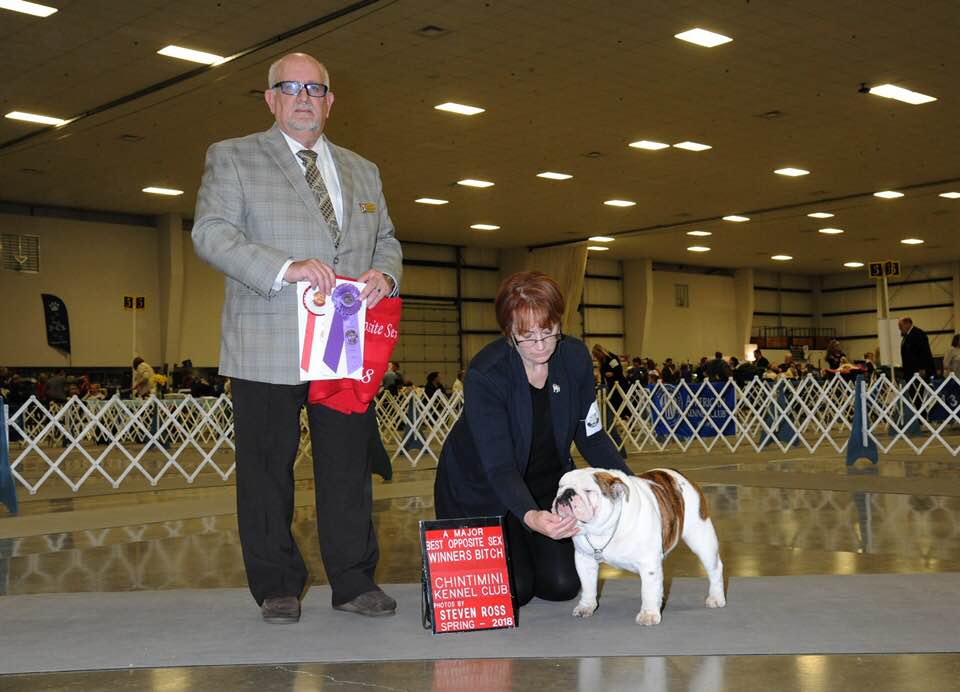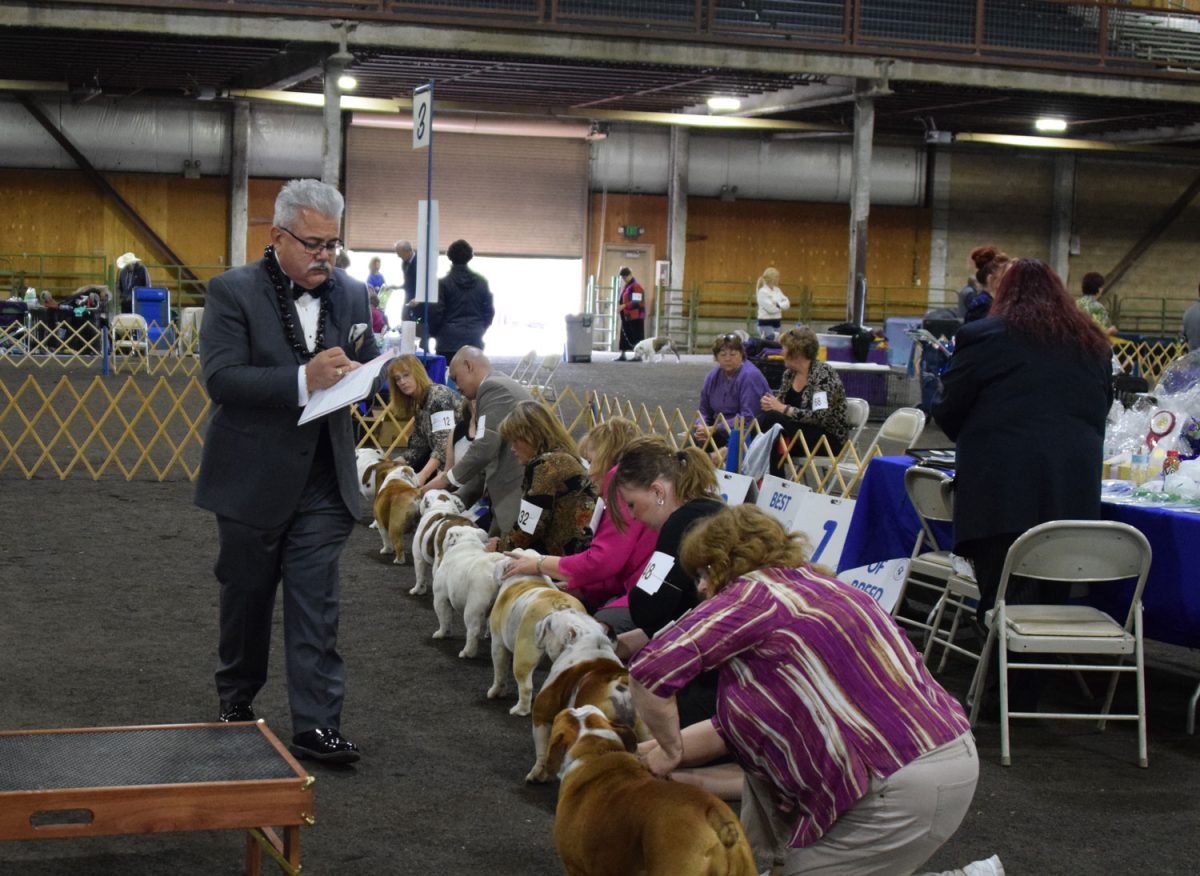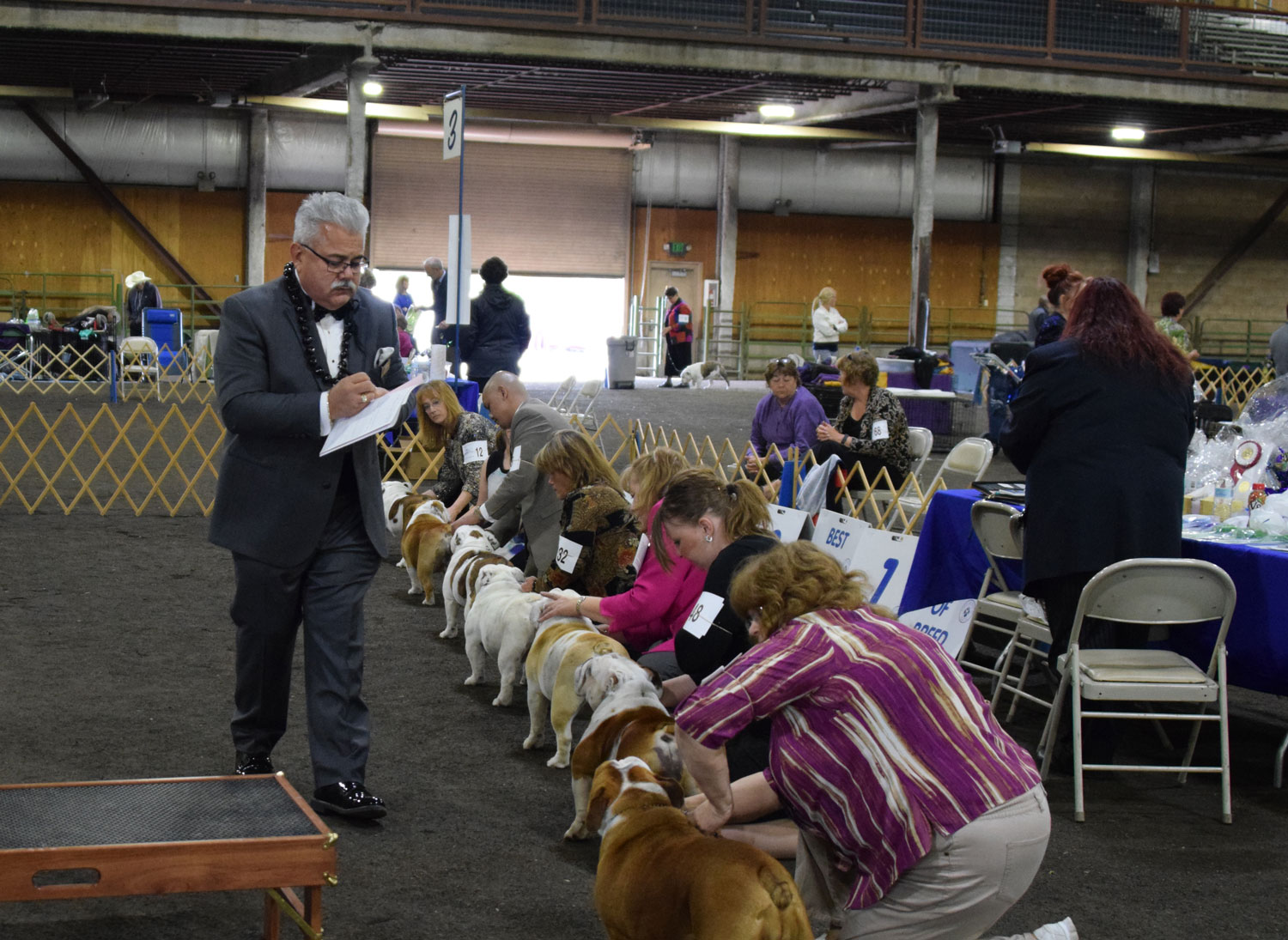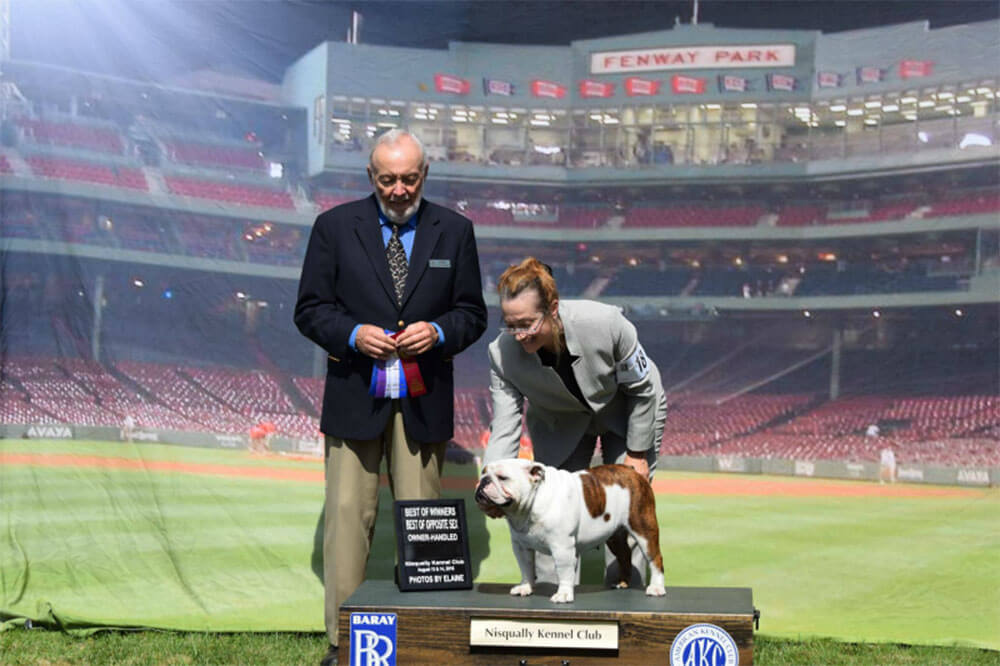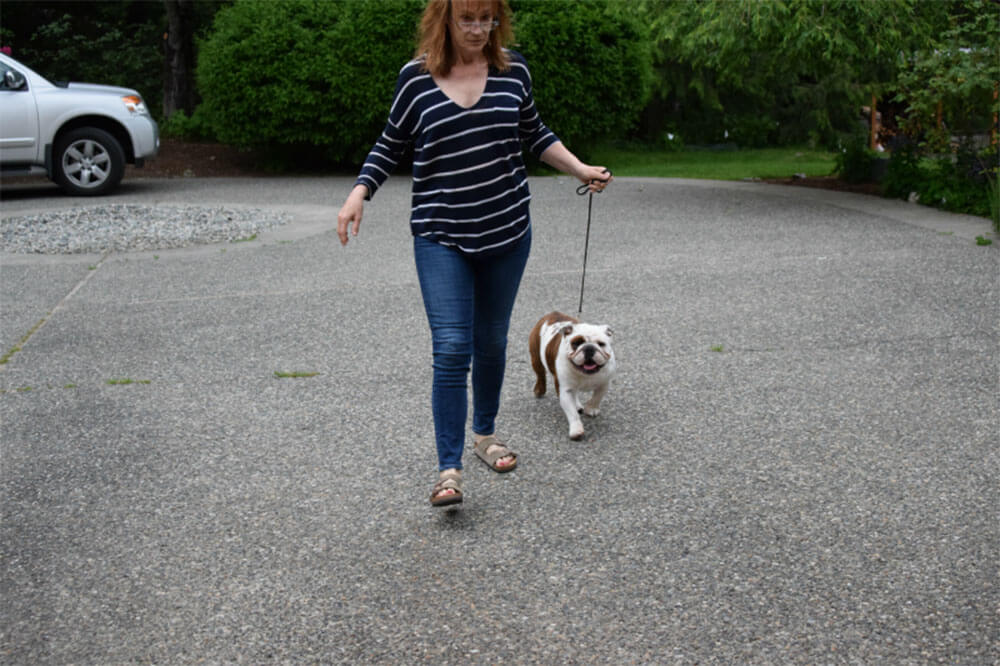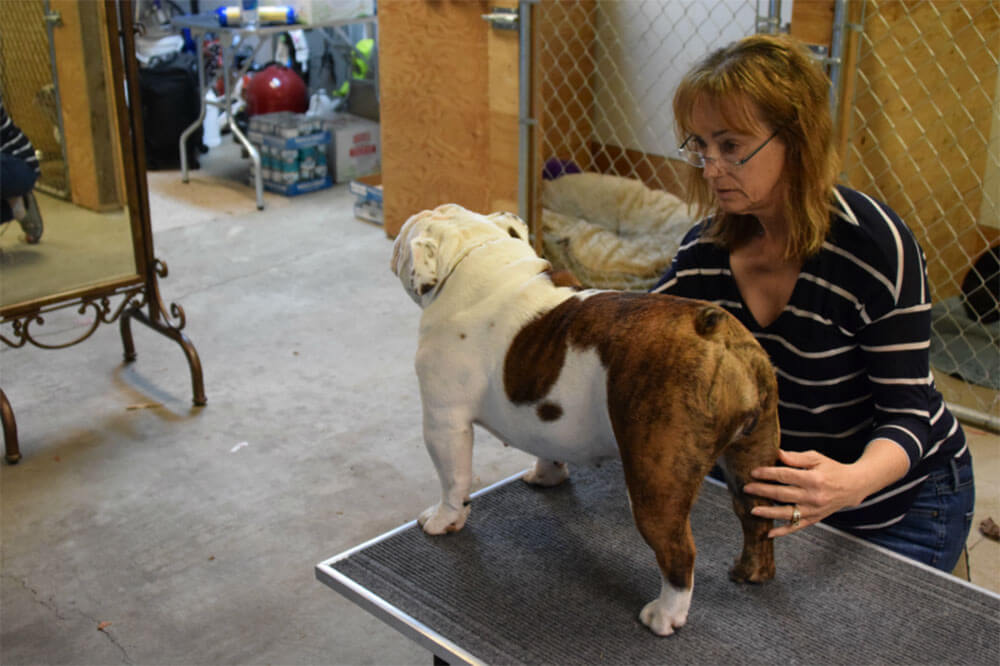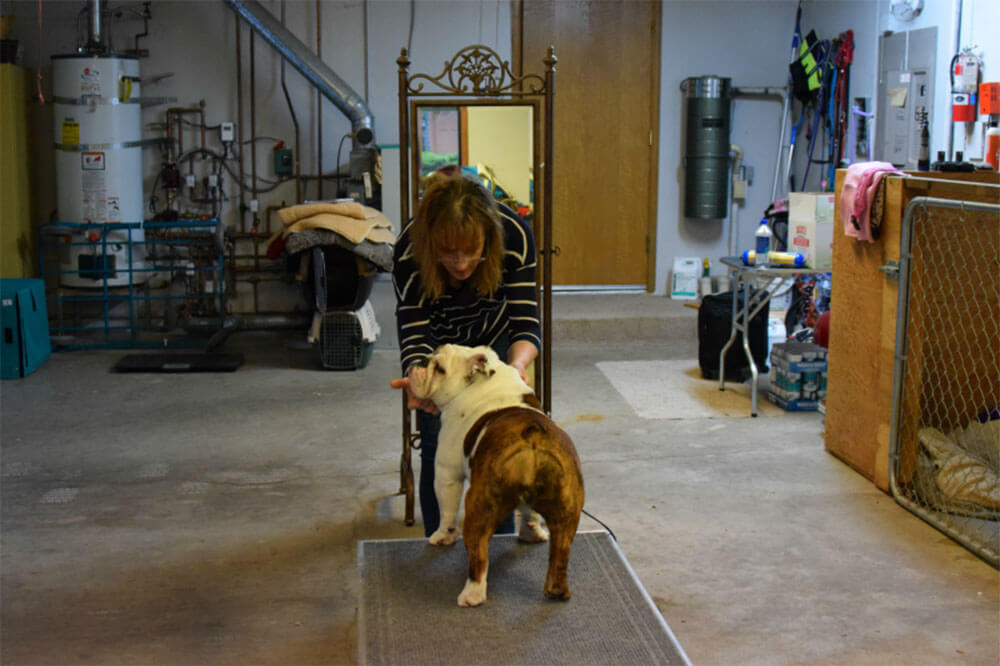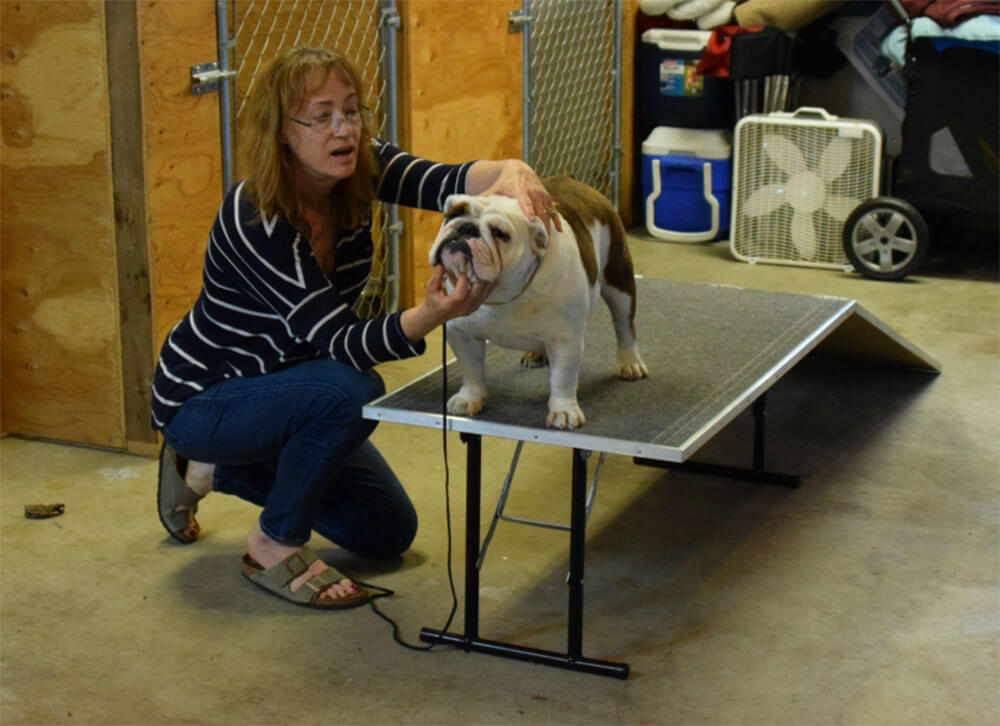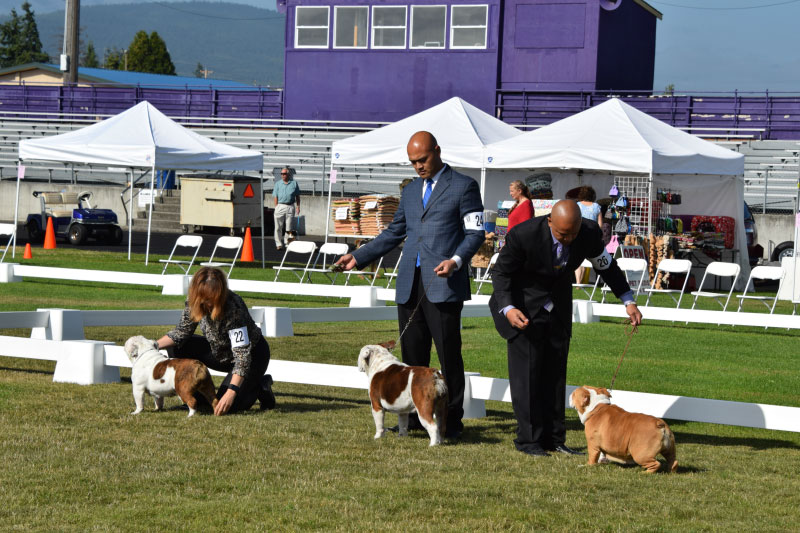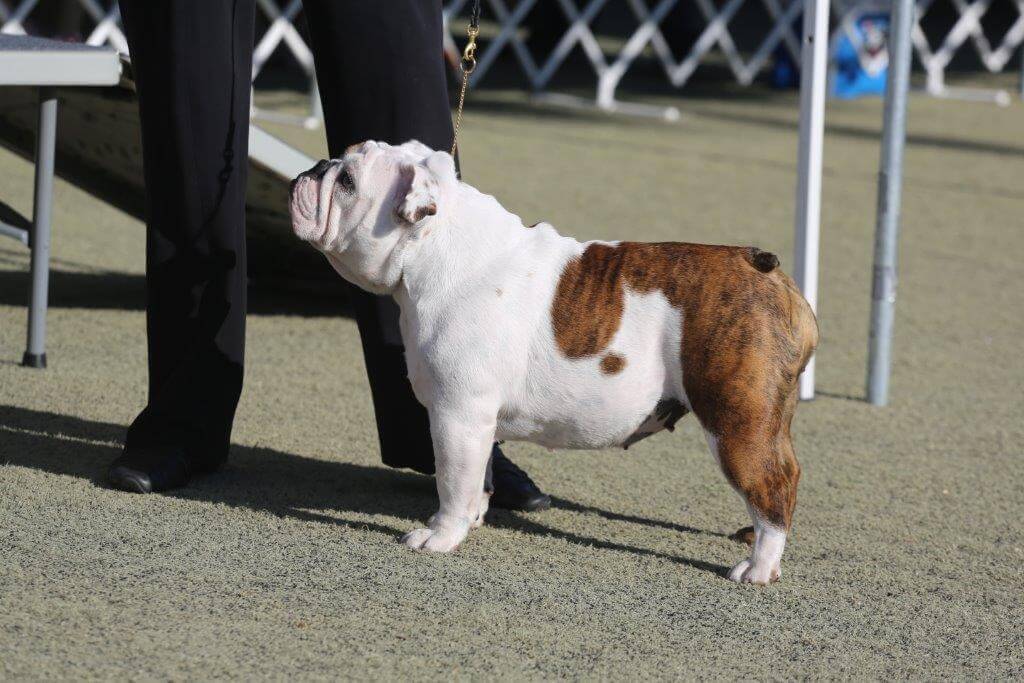
Looking to bring home the next champion bulldog? Read this first
Although Snow White and Wildflower grew to become Grand Champion-show dogs and Snow White’s puppy, Declan, is proving to be a top-notch show dog, we haven’t always been so fortunate. When we were first starting out in the world of competitive dog shows, we weren’t familiar with the qualities that show judges look for and it was only after competing in several dog shows that we developed a critical eye for spotting a show quality bulldog puppy. Here are a few things we wish we’d known when we’d first gotten started.
The official Bulldog Breed Standard is a set of guidelines published by the American Kennel Club that detail the appearance, movement and temperament qualities that make the “ideal bulldog”. These guidelines are what dog show judges use when they evaluate bulldogs in the show ring. Thus, before you begin looking to purchase a new bulldog puppy, you must study the skeletal and facial feature photos provided in the Standard first. This will help you develop a strong base line to use when evaluating a litter.
2. Know that there’s no such thing as a “perfect bulldog”
The Standard only provides the minimum requirements; beyond that, a breeder’s personal look preferences can play a big part. Every breeder has a slightly different interpretation of how the “perfect bulldog” looks and acts. Some breeders may prefer all-white bulldogs while others prefer brindle, for example. Some breeders may think breeding for the perfect head shape is most important while others may choose to emphasize angulation. Before choosing a breeder, make sure you have a thorough understanding of not only your breeder’s preferences but your own preferences as well.
Also, read: 9 Important Questions to Ask Your Bulldog Breeder
3. Finding an experienced breeder is vital
A show-quality pup rarely happens by accident. Experienced breeders who are trying to breed the next Grand Champion will place a lot of thought and careful-planning into the bulldog breeding process. They’ll research the pedigrees of the sire (or dam) and a lot of attention will be paid towards making sure the dam receives proper nutrition and care. Once the puppies are born, a reputable breeder will take care to ensure the puppies remain well-fed and are weaned at the appropriate times.
In addition to guaranteeing the health and genealogy of a puppy, a knowledgeable breeder will be able to recognize which puppies are most likely to grow into show-quality dogs. Though they’ll never be able to predict with full certainty, they’ll be able to pin point which dogs have the most potential based on the shapes of their heads, their bone structure and and how “short-backed” the dogs are.
4. Not all breeders are skilled at determining which puppies are show-quality
Evaluating which dogs fit The Standard and which don’t is a real skill. It takes a lot of experience and a certain amount of innate ability. Some breeders simply have not developed a critical eye for spotting show quality. It’s important to know this so that you don’t blindly trust “the experts”. You can take their opinion into consideration, of course, but when it comes to picking a show quality bulldog puppy, make sure you have the education to be able to make an objective assessment on your own.
5. Don’t let “puppy cuteness” influence your ability to be objective
Every bulldog puppy is adorable, and if you aren’t careful, it can be easy to let a bulldog’s spunky or precocious personality get in the way of you being able to make a rational, objective evaluation of their appearance. A bulldog puppy can have the best, cutest disposition in the world, but none of that will matter if it also has several qualities that don’t meet Breed Standards. If you’re looking for a bulldog puppy that you will one day be able to show in the ring, looks matters—and they matter a lot.
6. Wait until the puppy is at least a month old before making a decision
At a minimum, you want to wait until a puppy has learned how to “stack” so that you can you evaluate their angulation and bone structure. You also want to wait a few weeks to see which puppy has a more assertive personality, as outgoing dogs tend to love showing more than more timid dogs.
7. Conduct a thorough examination of the pup’s shoulders, neck, front legs, head, ears, tail, bite and teeth
Evaluating a puppy for show quality can be difficult because the puppy is still growing and changing; the three-week old standing before you may look perfect now but may morph into a very different-looking dog at the six-month mark. This guide from the American Kennel Club (AKC) goes into much greater detail on what to look for, but in general, try to choose a bulldog puppy that is proportional, short and “heavy boned”. When you stack the puppy, pay attention to the puppy’s skull shape. Look at the head from every angle; it should look broad and square. Also, make sure the pup’s ears aren’t too small.
8. Stay open-minded
One of the easiest mistakes to make when choosing a bulldog puppy is to go into the selection process with your mind already made up. If you’ve already decided that you’re only going to get a red and white bulldog before you’ve even met the litter for instance, then you’re setting yourself up for tunnel vision. This can cause you to overlook what may be the best puppy in the litter. Try to remain impartial.
9. Know that not every litter will have a show dog
In fact, many litters do not produce a single winning show dog, let alone a champion. Even if both bulldog parents were champion show dogs, that doesn’t mean their puppies will be. It’s important to keep this in mind so that your judgement doesn’t become too clouded by the pedigree parents.
10. Temperament is important, too
Although Standard-quality appearance and movement are essential, temperament shouldn’t be overlooked either. If you want your bulldog to stand out from the competition, he or she has to be happy and well-tempered as well.
When attempting to pick a show-quality bulldog, many people are drawn to the puppies that display the most energy and enthusiasm. However, puppies that are running circles around their siblings, jumping on visitors’ legs and wagging their tail and barking frequently tend to grow up to be equally hyperactive adult dogs. Hyper dogs can be harder to train and may be thinner-than-ideal because they burn so much energy throughout the day that they have trouble staying within the Standard-recommended weight.
Instead, look for puppies that seem even-tempered. These might be the puppies who hang back and observe their siblings when a new person walks into the room or who wait patiently by the food bowl when dinner time approaches. A bulldog with the ideal temperament will be, for the most part, “emotionally stable”. You don’t want a moody or restless dog or one that seems overly timid or nervous. A show-quality dog will also appear to be curious in the world around them.
11. A bulldog who doesn’t match the Standard as a puppy likely won’t match the Standard as an adult
Many make the mistake of thinking that the puppy will “grow out of” any discrepancies they notice that deviate from the Standard. Most of the time, however, it doesn’t work that way. Small, barely-noticeable faults in appearance that are apparent in puppies will often grow to become extremely obvious defects as the dog ages.
A few defects to watch for include:
- Heads positioned directly on top of shoulders—This may be a red flag that the dog will grow up to have a short neck
- Slightly-bowed legs—The legs should be straight. If they’re turned in slightly, know that this will only become more extreme in the passing weeks and months.
- A curved top-line—The top-line should be level. This article has several photos that illustrate well the difference between a good and bad top-line.
12. Notice how the puppy moves
When the puppy walks towards you, you should pay close attention to his or her elbows. Do you see them jutting in and out as the puppy moves? If the answer is yes, then this is not a good sign. Also, watching the dog move can help you spot any issues with the dog’s hocks, which you may have missed when examining them while the dog was stacked. If the puppy moves in a stilted manner or if their legs seem to bow close together when they run, then this could be a sign that the puppy has sickle or straight hocks. This article provides several photos to show you what a healthy bulldog’s legs should look like.
13. Don’t forget to evaluate the dog as a whole
Oftentimes people can get so hung up one feature or fault that they lose all perspective. Sure, the puppy you’re looking at might have a perfectly-shaped head, but what will that matter if their gait is off? A show-quality puppy should be well-balanced and should not have any major faults or overly-exaggerated features. Often times what this will translate into is a somewhat boring or “plain-looking” puppy. But some of the most ordinary-looking puppies grow up into show-winning adults. Before you make your decision, step back and take a look at the puppy as whole.
14. If your dog isn’t winning, you may need to re-evaluate your choice
After you’ve chosen your bulldog puppy and begun showing, if he or she consistently doesn’t place, it may be time to re-evaluate whether or not you’ve chosen the right dog. While the temptation may be to place blame elsewhere (like favoritism among judges or unfair competitive advantage), try to step back and take another objective look at your dog. While it could be that the judges are biased, more often than not, it’s because your dog is lacking in an important quality. This may be a point where you’ll need to retire your dog or sell him or her as a pet. Ask a few experienced breeders or dog show participants to give you an honest evaluation of your dog. It can be difficult to objectively evaluate a pup you’ve grown attached to, so you’ll need all the help you can get.
About Cascade Bulldogs: Cascade Bulldogs is a bulldog blog managed by Gail and Eddie Harris, a couple who breeds and raises bulldog puppies in Seattle, Washington. They are the proud parents to Wildflower, Snow White and Declan, three celebrity bulldog show dogs.
